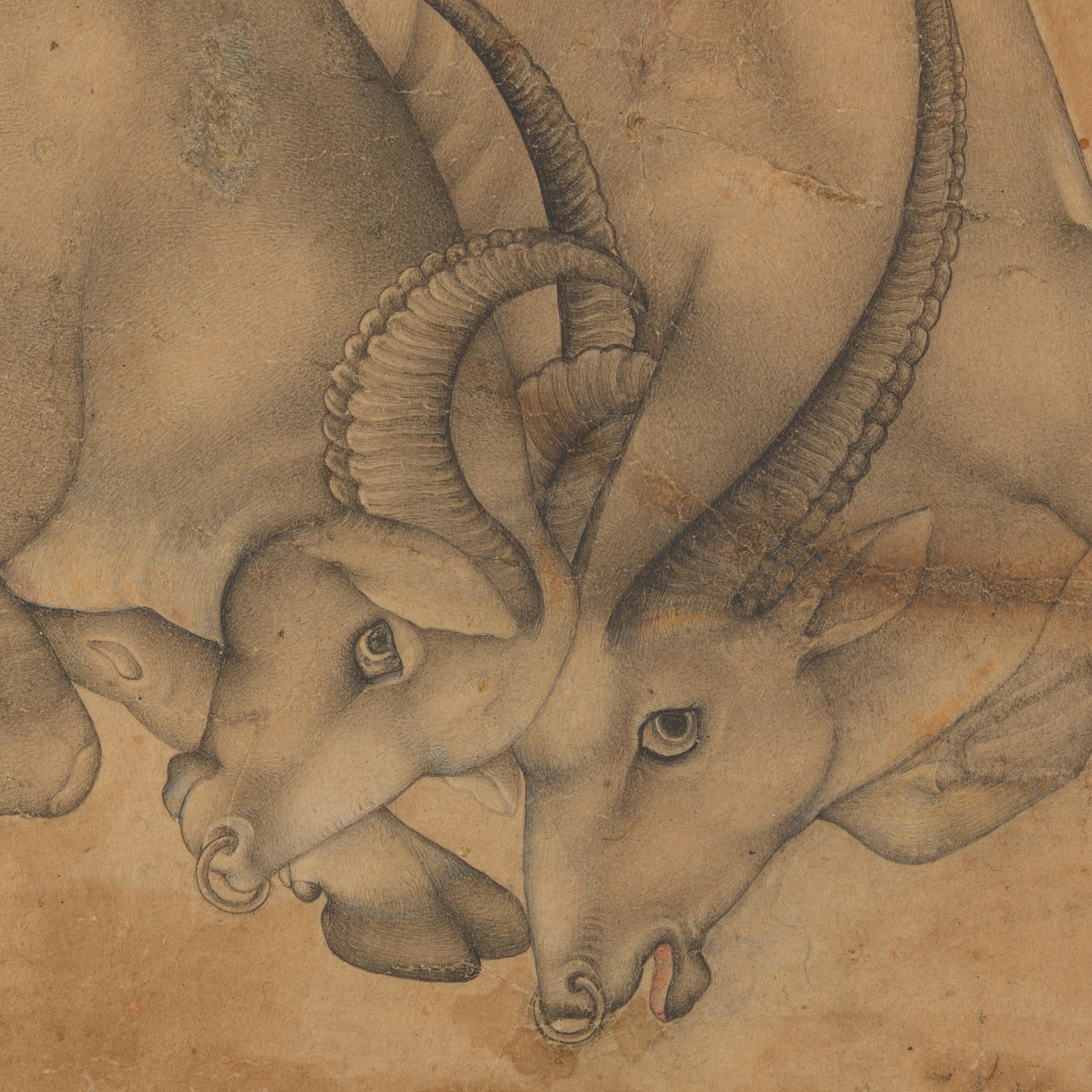Ink and Ivory: Indian Drawings and Photographs Selected with James Ivory
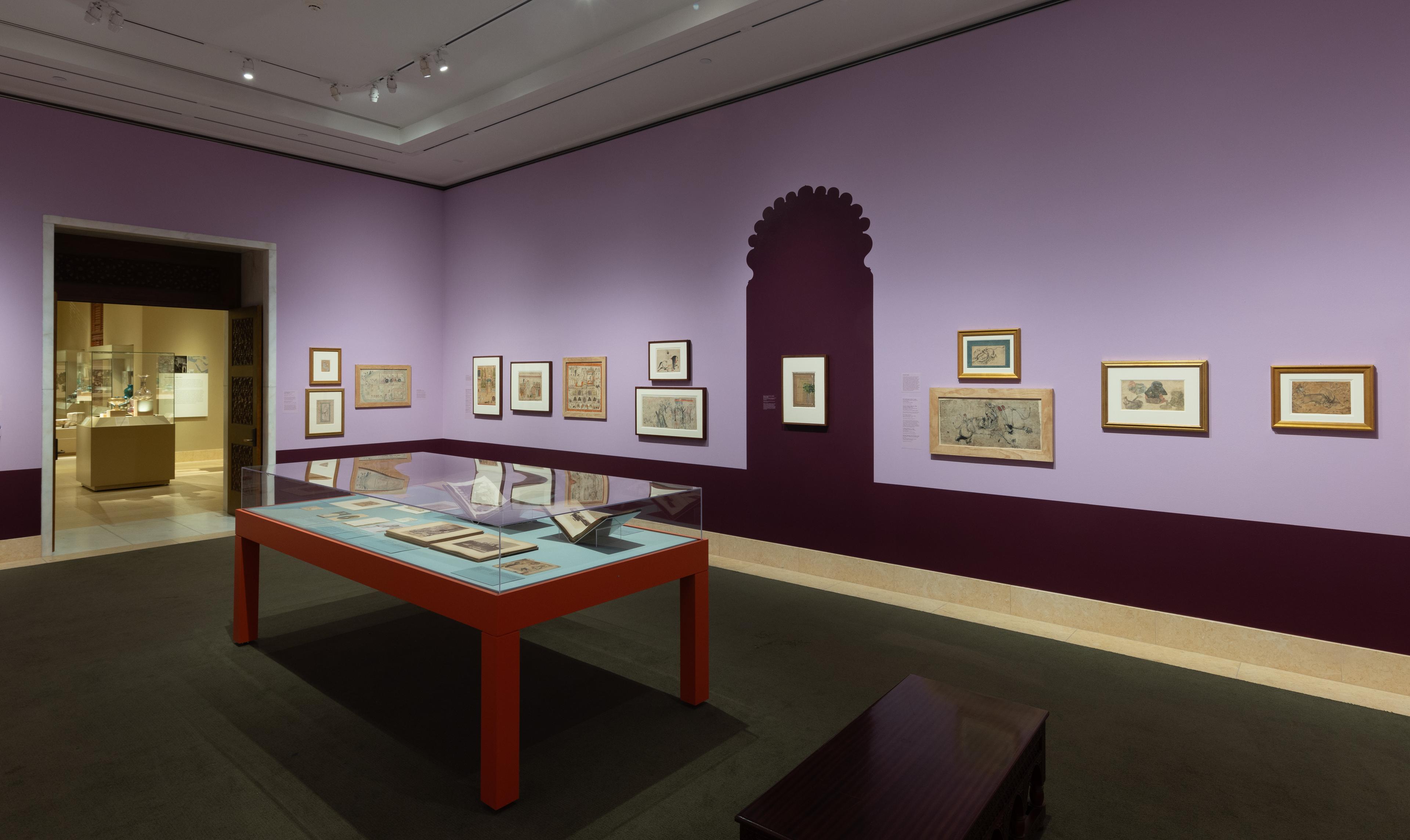
Taut lines, expressive brushwork, and a palette of dark ink and soft color distinguish the drawings made at Indian courts from the sixteenth to the nineteenth centuries. Later, as the age of photography dawned in South Asia, new views of Indian life and culture were captured through the lens of the camera.
American filmmaker and photographer James Ivory (b.1928) has long been inspired and influenced by the Indian eye, both as a storyteller and a collector. For him, the purity of drawing is akin to the sense of reportage and truth conveyed by the camera. This focused exhibition features works selected from The Met collection in partnership with Ivory.
Preeminent among the drawings created by Mughal and Persian artists are highly finished nimqalam (“half pen”) images, executed in a stippling technique that creates a sense of volume and naturalistic modeling. Once photography took hold, artists further evolved a new sense of the third dimension and realism under its impact; at the same time compositions and poses in photographic albums often reflect traditional artistic conventions.
Informal drawings here include preparatory designs for paintings and patterns used for transferring and copying compositions by masters. The freshness of these works reveals the hand of the individual artist at its most unalloyed, as observation, personal style, wit, and process shine through.
The exhibition is made possible by The Hagop Kevorkian Fund.
Additional support is provided by the Lavori Sterling Foundation Endowment Fund.
Nimqalam and Mughal Drawings

Nimqalam (“half-pen”) drawings are executed with extremely fine stippling. A massing of delicate dots and lines creates areas of shading and volume. Artists may have used a brush with a single long hair, supported on the sides with two shorter hairs. Mughal artists excelled in this technique. Some of their work evokes the effect of Chinese moguhua (“boneless painting”) and the hatchwork and modeling of European engravings and drawings, both of which were ingredients in the Mughal style.
Selected Artworks
Press the down key to skip to the last item.
Animal Combat
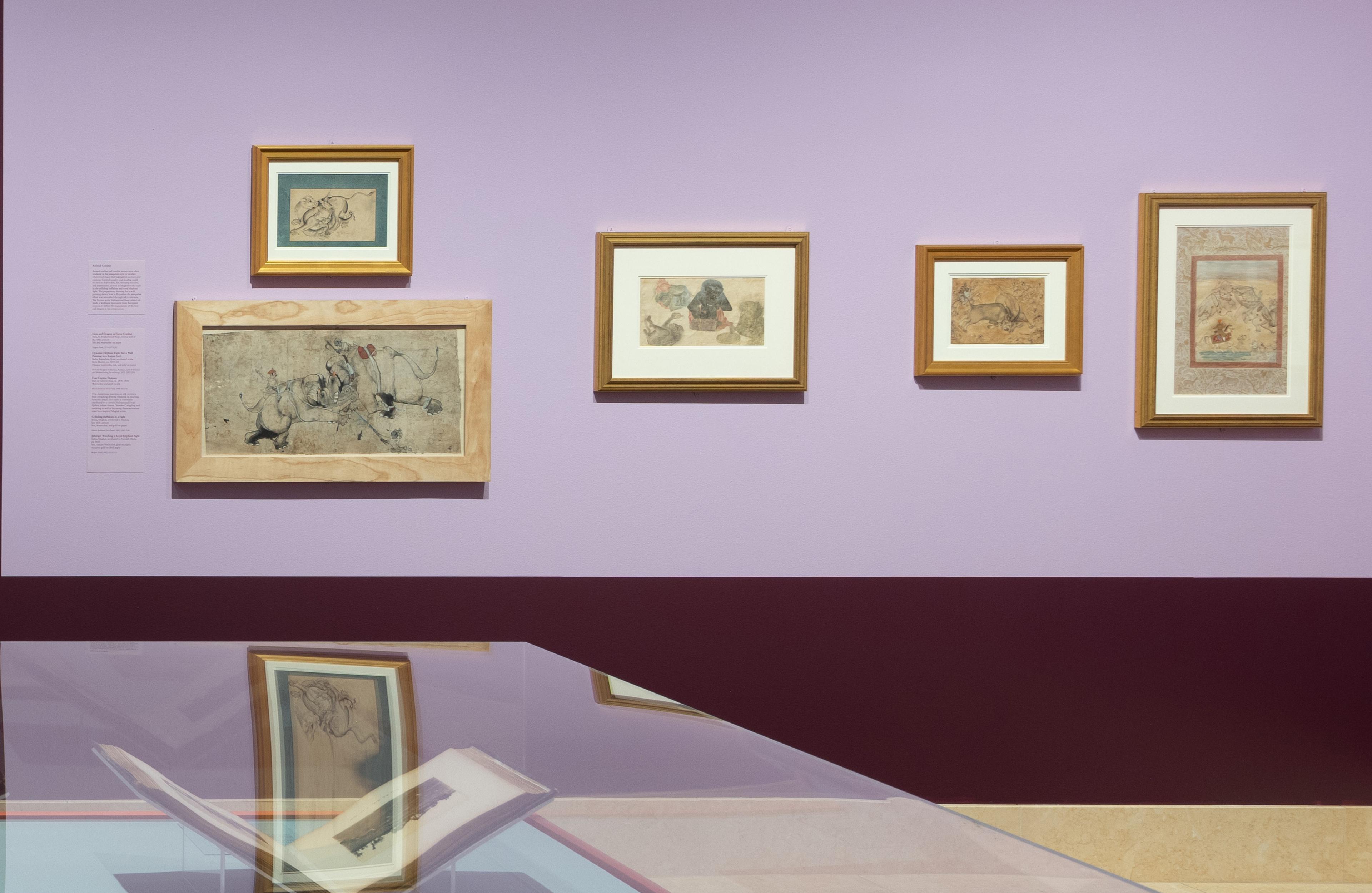
Animal studies and combat scenes were often rendered in the nimqalam style or another related technique that highlighted contrast and contour. Limited tonality and shading could be used to depict skin, fur, straining muscles, and expressions, as seen in Mughal works such as the colliding buffaloes and royal elephant fight. The preparatory drawing for a wall painting shows how in Rajasthan the nimqalam effect was intensified through inky contrasts. The Persian artist Muhammad Baqir added ink wash, a technique borrowed from European sources, to define the musculature of the lion and dragon in his composition.
Selected Artworks
Press the down key to skip to the last item.
Floral Fantasies and Natural Studies
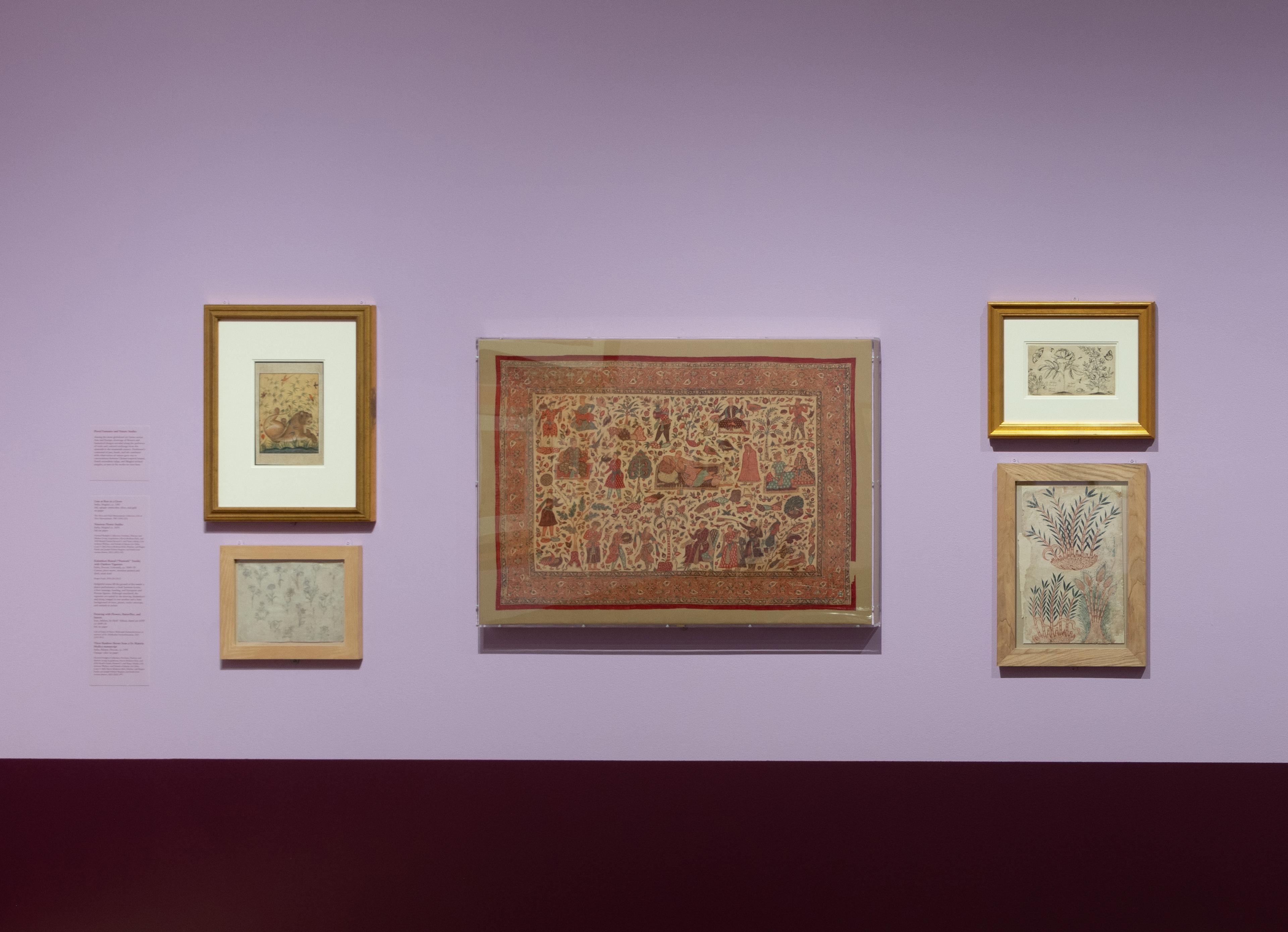
Among the most globalized art forms across Asia and Europe, drawings of flowers and fantastical designs traveled along the pathways of trade and cultural exchange from the sixteenth to the nineteenth century. Draftsmen’s command of pen, brush, and ink combined with observation of nature gave rise to conversations between Chinese-inspired lotuses, Dutch naturalistic tulips, and Mughal stylized poppies, as seen in the works on view here.
Selected Artworks
Press the down key to skip to the last item.
Sharp Lines, Sharp Wit
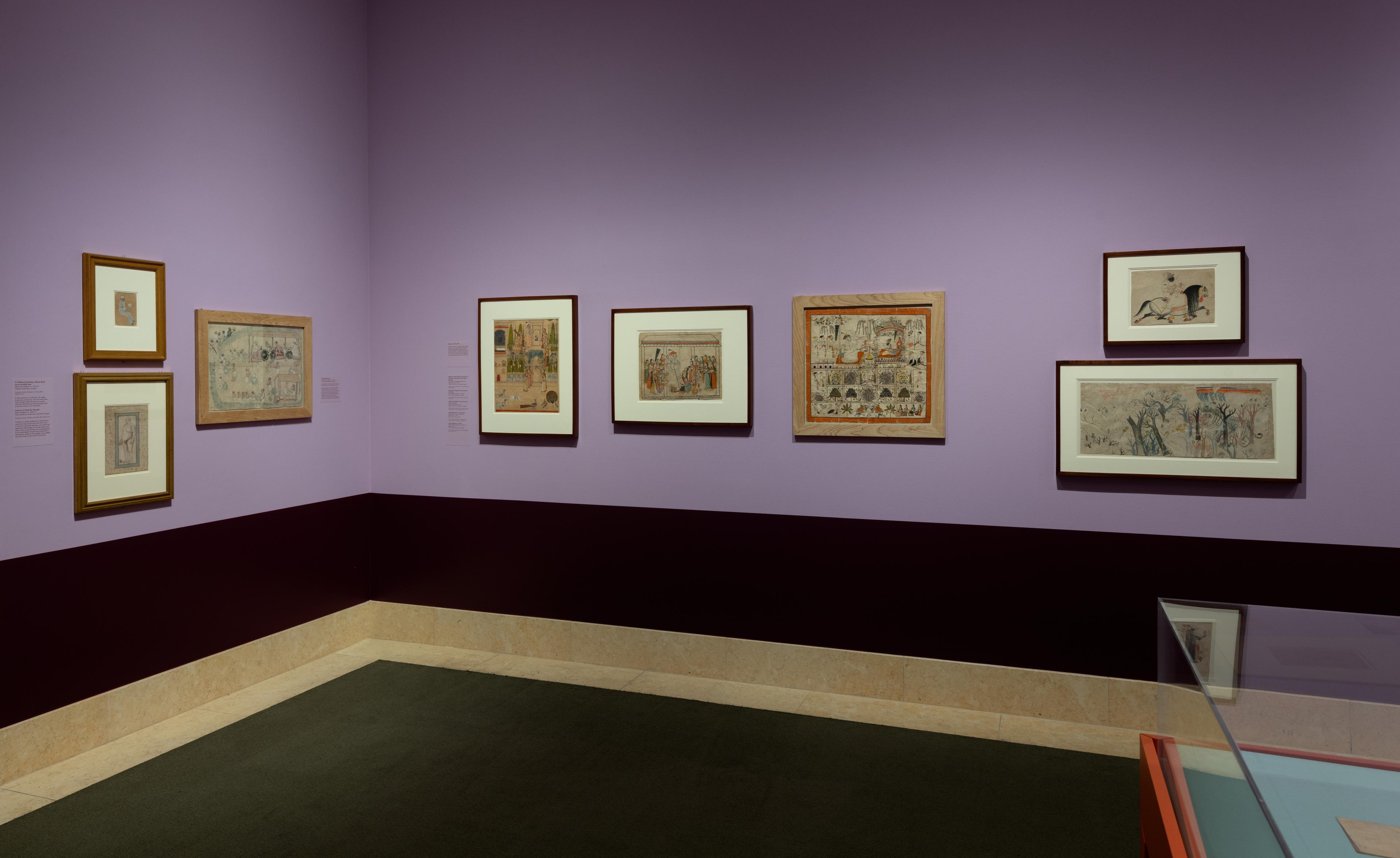
For the court artist, drawings could be vehicles for satire, wit, or the rendering of whimsical subjects. Sketches might express the artist’s unfinished thoughts or unflinching observations, free from a patron’s gaze. Some drawings here may have been arrested midway through when an unexpectedly pleasing effect was achieved.
Selected Artworks
Press the down key to skip to the last item.
Cartoons for Wall Paintings
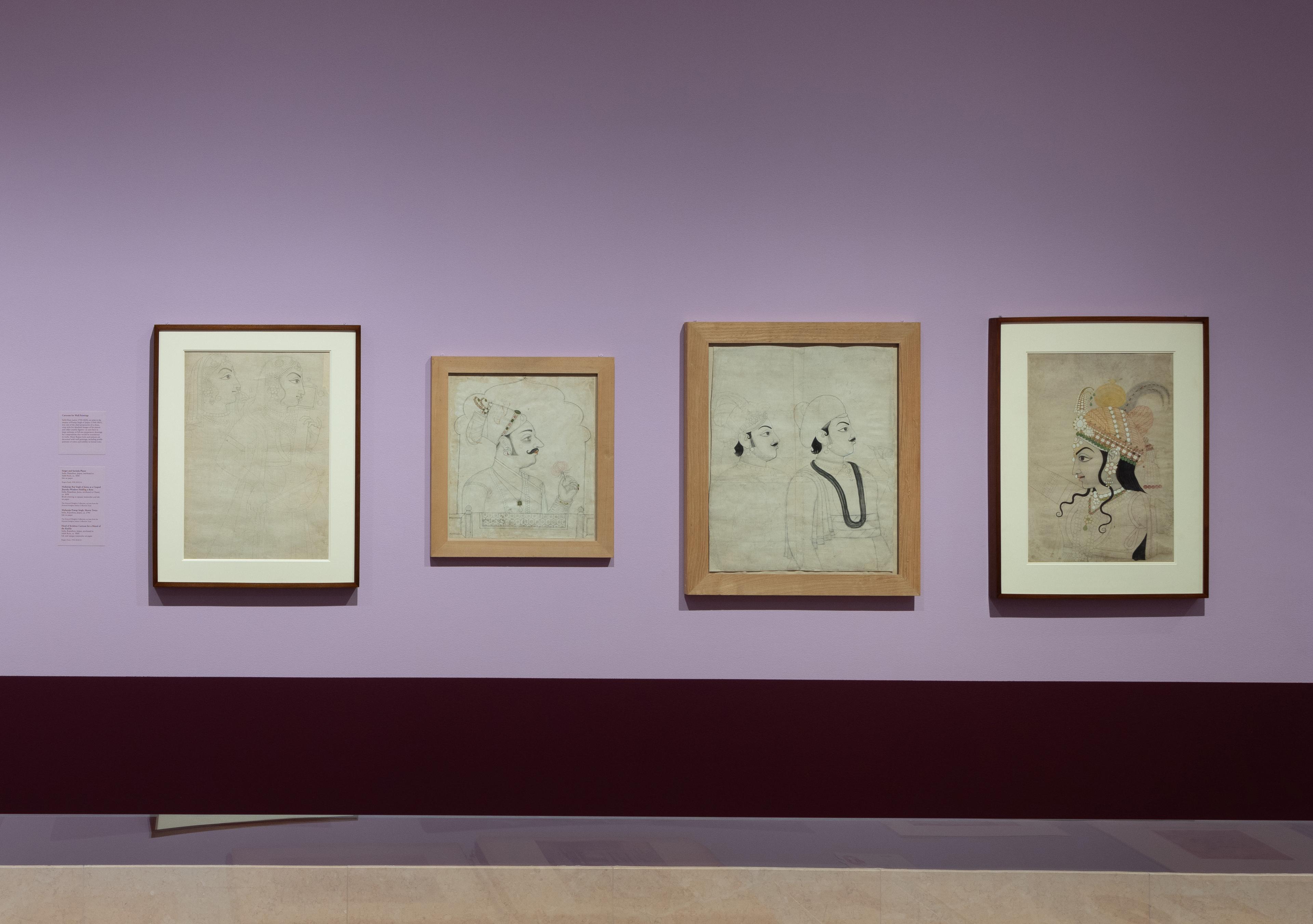
Sahib Ram, an artist in the employ of Pratap Singh of Jaipur (1764–1803), was one of the chief proponents of a clean, crisp style for idealized images of his patron and other courtly figures—as seen here in large cartoons, or full-size preparatory drawings for compositions that would be transferred to walls. Many Rajput forts and palaces are decorated with wall paintings, including profile portraits of rulers and nobility in formal rows.
Selected Artworks
Press the down key to skip to the last item.
British Raj Patronage
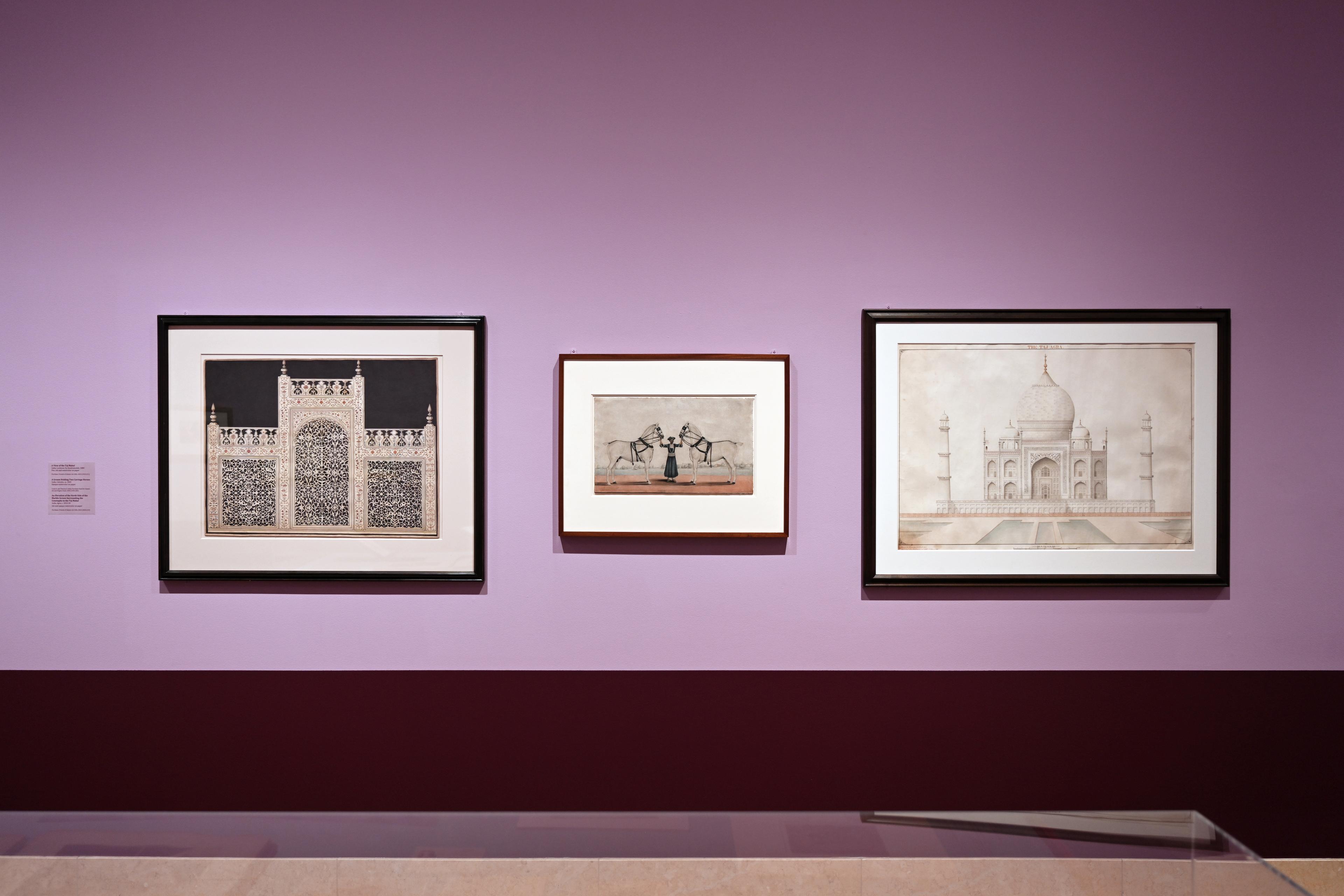
These works demonstrate the continuation of draftsmanship, drawing, and color wash techniques under British patronage in India.
Selected Artworks
Press the down key to skip to the last item.
Collector’s Case
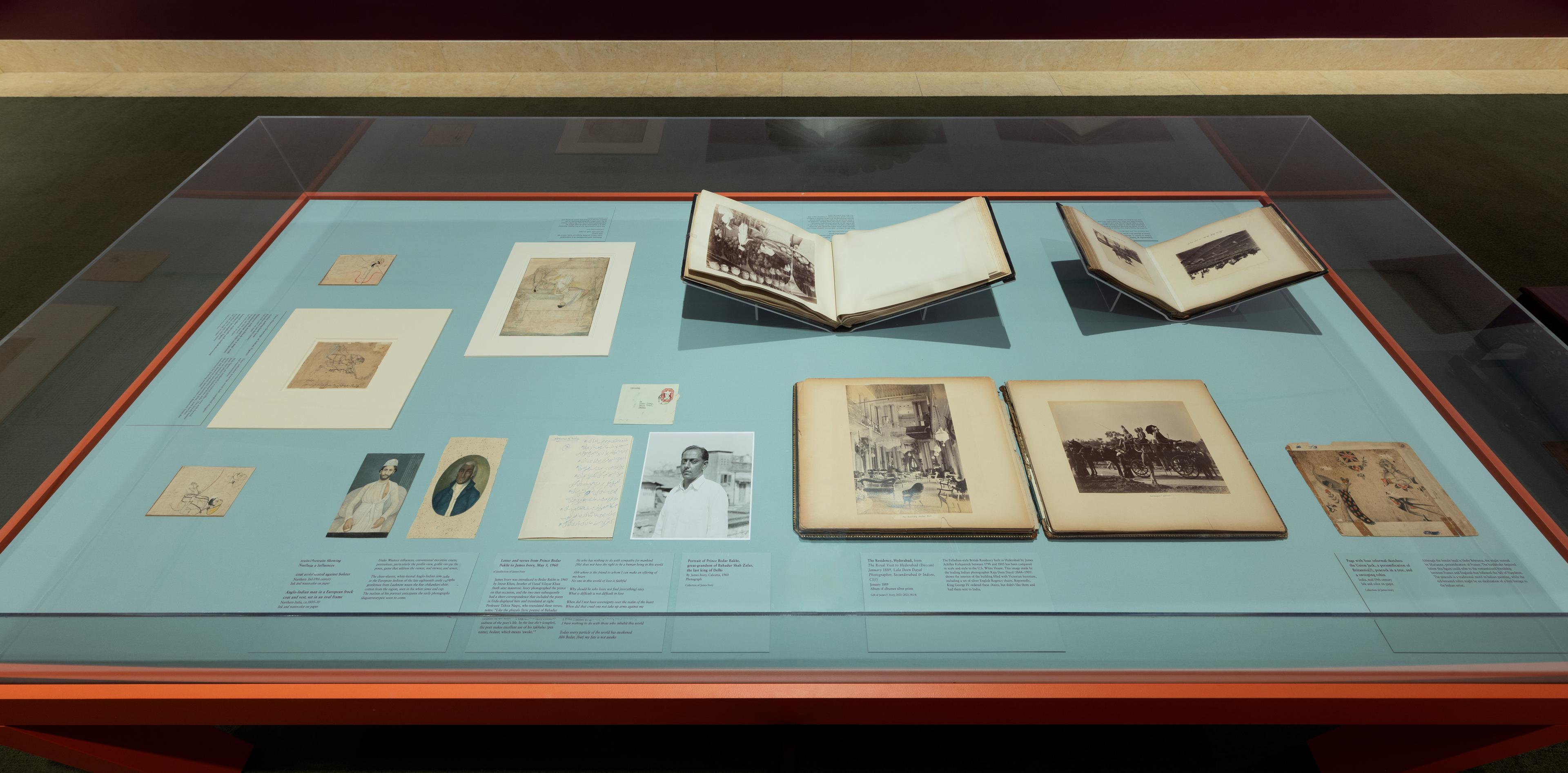
James Ivory’s collection includes nineteenth-century photograph albums of views of India, Afghanistan, Burma and other regions, that he gifted to The Metropolitan Museum of Art. The rich variety of images includes train works and shipping scenes of early industrialization and trade in Bombay and Calcutta; the documentation of a royal visit by the Hyderabad based photographer Raja Deen Dayal; and images of a Quetta marketplace before the earthquake of 1935. James Ivory’s own photograph of Prince Bedar Bakht (great grandson of the last king of Delhi Bahadur Shah Zafar), a personal letter and poem from the prince, and several drawings are included in this display case of diverse items.
Selected Artworks
Press the down key to skip to the last item.
